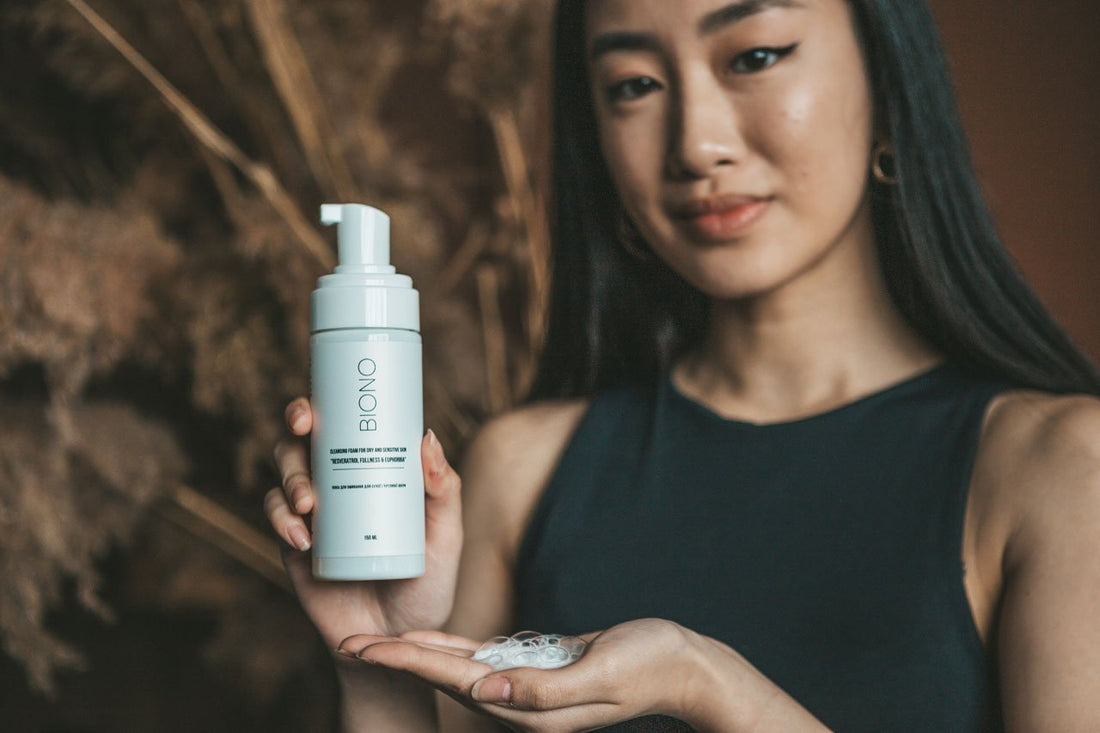
Hyperpigmentation: How to get rid of dark spots on the skin
Hyperpigmentation is one of the most common cosmetic problems people face. Dark spots on the skin can appear due to various factors, such as excessive exposure to the sun, hormonal changes or the effects of acne. It is important to understand that proper skin care can help not only reduce existing blemishes, but also prevent them from appearing in the future.
What is hyperpigmentation?
Hyperpigmentation is a dermatological condition in which areas of the skin become darker due to overproduction of melanin, the pigment that gives the skin its natural color. Most often, hyperpigmentation occurs as a result of prolonged exposure to the sun without protection, when ultraviolet rays stimulate the production of melanin. In addition, factors such as age-related changes, disease, skin trauma and inflammation can also contribute to the appearance of age spots.
Hyperpigmentation: how does it manifest itself?
Hyperpigmentation can appear as spots of various sizes, from small dots to large areas of darkening. The most common types are sunspots, melasma, and post-inflammatory hyperpigmentation, which often occurs after acne has healed. Dark spots are usually localized on the face, arms, shoulders or chest - those areas that are most exposed to the sun.
Causes of skin hyperpigmentation
Hyperpigmentation can occur for various reasons that affect the level of melanin in the skin. This is not only an aesthetic problem, but also an indicator of certain processes occurring in the body. Let's look at the main factors that contribute to the appearance of dark spots on the skin.
The influence of ultraviolet rays
One of the main causes of hyperpigmentation is prolonged exposure to ultraviolet (UV) rays. The sun's rays stimulate the skin to produce more melanin, which leads to the formation of dark spots known as sunspots or age spots. Using sunscreen helps reduce this effect.
Hormonal changes
Hormonal changes that occur during pregnancy, menopause or when taking certain hormonal drugs can provoke hyperpigmentation. Melasma, also known as the "mask of pregnancy," is an example of this type of pigmented skin change.
Post-inflammatory hyperpigmentation
Post-inflammatory hyperpigmentation often occurs after acne, cuts, wounds, or other skin damage. After the inflammation subsides, dark spots may remain on the skin, which may be visible for a long time.
Age changes
With age, the skin becomes more prone to hyperpigmentation. After the age of 40, the level of melanin production can increase, which contributes to the appearance of so-called age spots or "age spots", which usually appear on the face, arms and neck.
How to prevent hyperpigmentation?
Prevention of hyperpigmentation of the skin requires proper care, which includes daily protective measures and the use of special cosmetic products. A regular and careful approach to care will help not only to prevent the appearance of new pigment spots, but also to maintain an even skin tone.
Daily use of sunscreen
The most effective way to prevent hyperpigmentation is daily application of sunscreens with a high SPF level. Ultraviolet rays activate melanin production, so sun protection is a key step in preventing the formation of new dark spots.
Regular moisturizing of the skin
Dry skin is more vulnerable to the influence of external factors that can provoke hyperpigmentation. Moisturizers not only maintain moisture balance, but also increase the skin's barrier function, protecting it from stress and irritation that can cause blemishes.
Using products with vitamin C
Means with vitamin C are indispensable in the care of skin prone to pigmentation. Vitamin C acts as a powerful antioxidant that brightens the skin and reduces melanin production, which helps prevent new age spots and evens skin tone.
How to get rid of hyperpigmentation?
The fight against hyperpigmentation can be successful thanks to various methods that are aimed at reducing the amount of melanin in the skin and restoring an even tone. Here are some of the most effective ways to combat this problem.
Whitening creams
One of the most common methods of treating hyperpigmentation is the use of whitening creams. Products with active ingredients such as niacinamide, kojic acid or hydroquinone help reduce melanin production and reduce dark spots. Such creams can be used for daily skin care.
Peelings and exfoliants
Peels and exfoliants help exfoliate the top layer of the skin, stimulating cell renewal and reducing the appearance of dark spots. Chemical peels with AHA or BHA acids can effectively restore skin tone and improve its texture, making it more even and radiant.
Laser therapy
Laser therapy is one of the most effective methods of treating hyperpigmentation. It targets the deep layers of the skin, where melanin accumulates. The laser destroys pigment cells, which allows you to significantly reduce or completely eliminate dark spots. This method is suitable for more difficult cases, when other methods did not give the desired results.
The best means to fight hyperpigmentation
To effectively combat hyperpigmentation, it is necessary to correctly choose cosmetics that will work on different levels of the skin. The main focus should be on sun protection, antioxidant care and stimulation of skin cell renewal.
Cosmetics with SPF
Sun protection is the first and most important step in caring for hyperpigmented skin. Sunscreens with SPF 30 or higher help protect the skin from the harmful effects of UV rays, which stimulate melanin production and aggravate age spots. Daily use of SPF products — regardless of the season — is a must for preventing and combating hyperpigmentation.
Serums with vitamin C and E
Serums with vitamins C and E have a powerful antioxidant effect that helps fight skin damage caused by the sun and free radicals. These ingredients brighten the skin, reduce dark spots and make the overall skin tone more even. Regular use of such serums helps prevent further development of hyperpigmentation.
Means with retinoids
Retinoids are powerful skin cell renewal agents. They stimulate the natural regeneration process, thanks to which the skin gets rid of dead cells and regenerates itself. Using products with retinoids helps to reduce the appearance of dark spots and make the skin smooth and radiant.
Prevention of skin hyperpigmentation
The prevention of hyperpigmentation of the skin consists in the implementation of several simple but effective rules in daily care. This will help maintain an even tone and prevent the formation of new dark spots.
Wear protective clothing
In addition to using sunscreen, it is important to wear clothing that protects the skin from direct sunlight. Wide-brimmed hats, glasses, and light clothing with long sleeves will greatly reduce the risk of hyperpigmentation.
Clean your skin regularly
Cleanliness of the skin is the basis of its health. Use mild, non-irritating cleansers. This will help keep the skin healthy and prevent inflammation that can lead to post-inflammatory hyperpigmentation.
Visit a dermatologist
Care for skin prone to hyperpigmentation requires an individual approach. A consultation with a dermatologist will help you choose the means and procedures that will most effectively solve your problem.
Using acids to combat hyperpigmentation
Acids are powerful ingredients that are actively used in cosmetology to renew the skin and reduce hyperpigmentation. They work through chemical exfoliation, helping to remove the top layers of dead skin cells and stimulating its regeneration. Here are some of the most effective acids that help fight dark spots on the skin:
Glycolic acid
Glycolic acid is one of the most popular alpha hydroxy acids (AHA). It is derived from sugar cane and has the smallest molecular size of all AHAs, allowing it to penetrate deep into the skin. Glycolic acid helps exfoliate dead skin cells on the skin's surface, helping to even out skin tone and reduce dark spots. Its regular use makes the skin smoother and brighter. However, since glycolic acid can increase the skin's sensitivity to the sun, it is imperative to use sunscreen.
Salicylic acid
Salicylic acid belongs to the group of beta-hydroxy acids (BHA) and is best known for its anti-inflammatory properties. It penetrates deep into the pores, which makes it especially effective for the treatment of post-inflammatory hyperpigmentation, which often appears after acne. Salicylic acid helps fight not only dark spots, but also inflammation, blackheads and oily skin. Because it gently exfoliates the skin and regulates sebum production, salicylic acid is a great option for those prone to acne and pigmentation.
Lactic acid
Lactic acid is another AHA used to treat hyperpigmentation. Unlike glycolic acid, lactic acid has larger molecules, which makes it less aggressive and more suitable for sensitive skin. It exfoliates the top layer of skin, stimulating cell renewal and evens skin tone. Lactic acid also has moisturizing properties, making it ideal for people with dry skin that is prone to age spots.
How to use acids to fight hyperpigmentation
When incorporating acids into your skincare routine, it's important to start with low concentrations and build up gradually to avoid irritation. Acids are best used in the evening, and in the morning it is necessary to apply a sunscreen with a high SPF, since acids can increase the sensitivity of the skin to ultraviolet rays. Acids can be found in various forms: tonics, serums, creams or masks, which allows you to choose the most convenient option for daily care.
Benefits of using acids for the skin:
- Deep exfoliation that stimulates cell renewal.
- Reduction of manifestations of hyperpigmentation and equalization of skin tone.
- Improving skin texture, making it smoother and more radiant.
- Some acids, like salicylic acid, also have anti-inflammatory properties, which is beneficial for acne-prone skin.
Using acids is one of the most effective ways to fight hyperpigmentation, but it's important to use them with caution, especially on sensitive skin, and to remember to wear sunscreen.
Conclusion
Hyperpigmentation of the skin is a common problem, but proper care and use of cosmetic products will help to significantly reduce its manifestations. Regular use of sunscreens, serums with antioxidants and special creams will help you achieve an even and radiant skin tone.
Hyperpigmentation is a common aesthetic problem that can be effectively addressed with proper skin care. The use of sunscreens, acids, antioxidants, as well as retinoids will help reduce the appearance of dark spots and even out skin tone. It is important to remember about regular moisturizing and UV protection to prevent the re-formation of age spots. Tips on choosing the right beauty products and treatments, such as peels or laser therapy, will help you make your skin healthier and more radiant.










